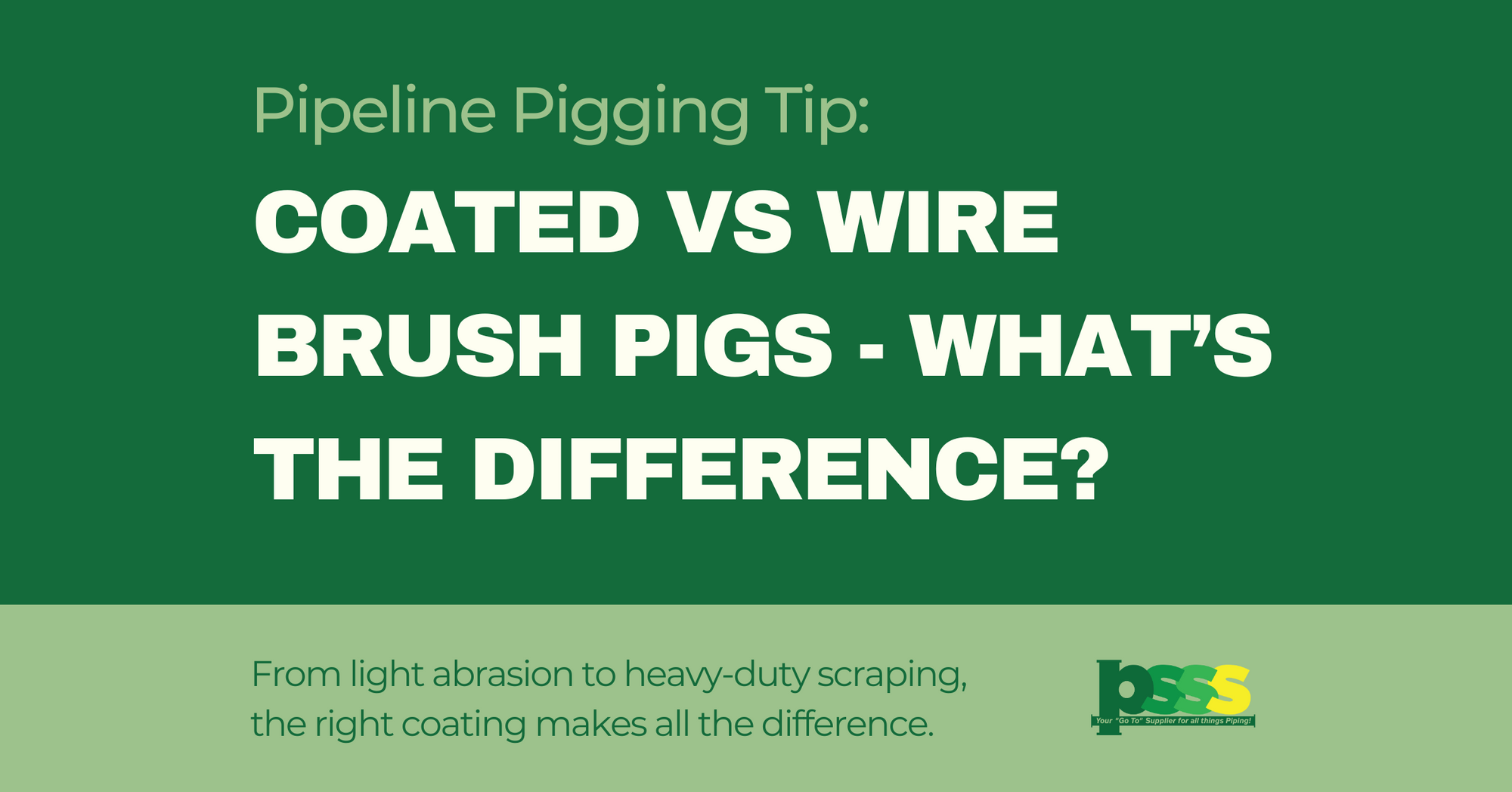When it comes to foam pigs, it's not just the density that matters - it’s the coating.
From bare foam to full wire coverage, pig coatings play a huge role in how effectively a pig cleans, pushes product, or navigates your pipeline. The right surface finish can help you clear debris, extend pig lifespan, or tackle tougher contaminants without damaging your system.
Let’s break down the most common foam pig coatings, how wire brushes compare, and how to know which pig is best for your job.
1. Bare Foam Pigs
Best for:
-
Drying
-
Dewatering
-
Product batching
-
Light cleaning jobs
Bare foam pigs are uncoated, meaning they’re made entirely from foam with no surface treatment. They’re lightweight, flexible, and cost-effective - perfect for pipelines that don’t need aggressive cleaning.
Tip: These are commonly used during commissioning or post-hydrotesting when only light residue or water needs to be removed.
2. Criss-Cross Coated Foam Pigs
Best for:
-
Regular maintenance
-
Systems with wax, soft debris, or buildup
-
Moderate product pushing
These pigs feature a polyurethane coating in a criss-cross pattern over the foam body. This design increases surface tension and adds light abrasion without compromising flexibility - making them ideal for ongoing maintenance or batching.
Stocked in multiple sizes - ready to ship across Australia. Browse our pig range.
3. Wire Brush Foam Pigs
Best for:
-
Moderate to aggressive cleaning
-
Removing scale, rust, or hardened wax
-
Steel pipelines with stubborn buildup
Wire brush pigs take things a step further by embedding steel or stainless-steel brush strips into the foam. These pigs scrape away deposits that softer pigs can’t shift - while still retaining a foam core for flexibility.
Note: These are not suitable for plastic-lined or coated internal surfaces, as the wire may cause damage.
4. Total Wire Pigs
Best for:
-
Heavy-duty internal cleaning
-
Pre-inspection prep
-
Industrial-grade scale removal
Total Wire Pigs are the most abrasive option. They’re covered in a full outer layer of wire brush material, providing maximum surface contact and scraping force.
While they’re incredibly effective, they’re also specialised - best used when you know your pipeline is robust enough to handle aggressive abrasion.
So… Which Pig Should You Choose?
Here’s a quick cheat sheet:
| Pig Type | Cleaning Strength | Flexibility |
Best For |
| Bare Foam | Low | High | Drying, batching |
| Criss-Cross Coated | Medium | Medium | Regular cleaning |
| Wire Brush | High | Medium-Low | Debris, rust, wax |
| Total Wire | Very High | Low |
Scale, prep work |
Need help deciding? We can help match the pig to your pipeline size, contents, and cleaning goals.
Shop Smart - Or Ask Us First
PSSS stocks a wide range of coated and wire brush pigs - and we’re here to help you choose the right one. Whether you’re cleaning for inspection, pushing product, or maintaining flow, the right coating can make all the difference.
You can browse our full pig range here:
View Pipeline Pig Products
Contact us or give us a call today.
Related Reading
-
Choosing the Right Pig Density
Guide to selecting the right pig density for your pipeline -
What is Pipeline Pigging?
An introduction to pigging and how it works -
7 Signs It’s Time to Pig Your Pipeline
Learn the warning signs of buildup, flow issues, and when it’s time to act

